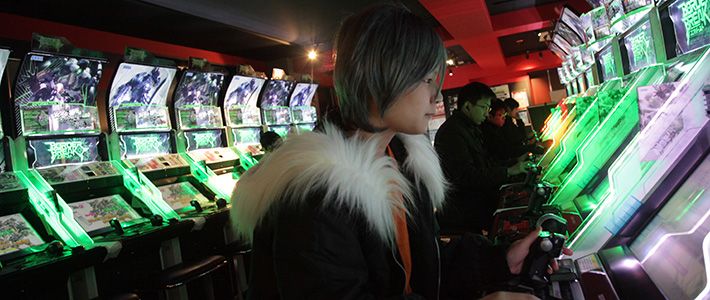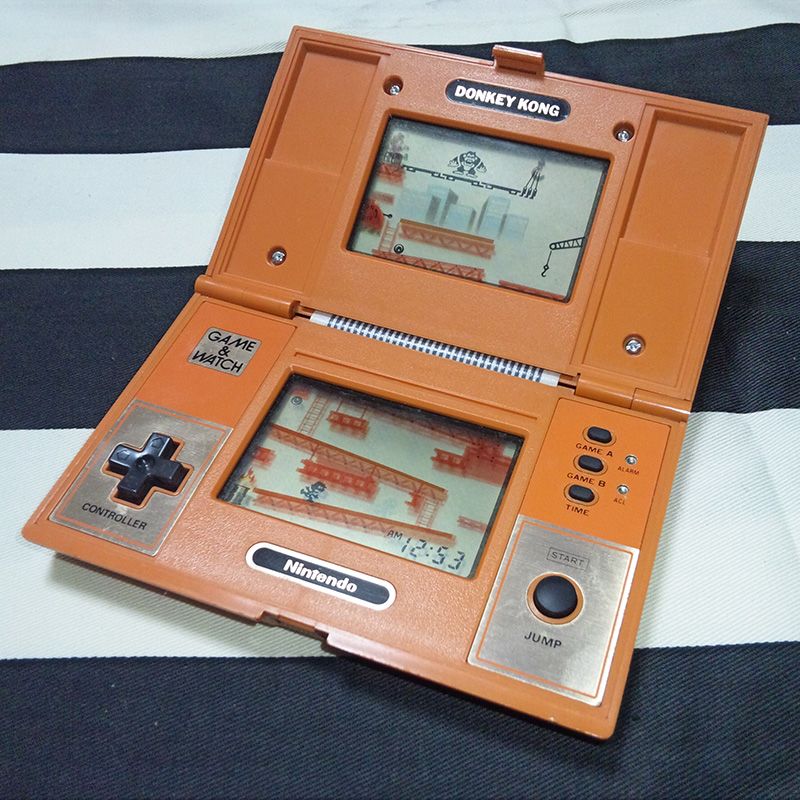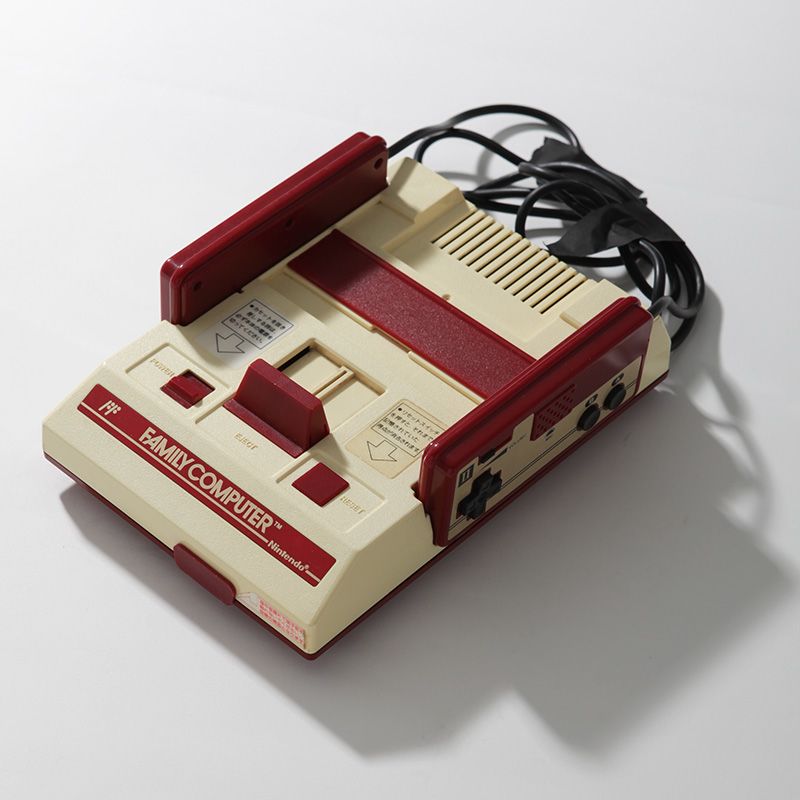
Contemporary Culture Going Global
Decoding the Charm of Japanese Video Games (Part Two)
Economy Culture- English
- 日本語
- 简体字
- 繁體字
- Français
- Español
- العربية
- Русский
Continued from part one.
A Foundation of Electronic Prowess
Japan’s game software has been driven largely by sales of video game consoles. When a game console sells well throughout the country, then the software designed for it obviously has a larger market to target. And the sales for a console increase when popular titles are available for it. This synergistic relationship has driven the industry forward.
The successful creation of a game console depends on more than just a reliable blueprint for the machine itself. Systems must to be in place to mass-produce the semiconductors required for the consoles’ specifications. Another key requirement is production infrastructure ensuring a reliable supply of semiconductors, not to mention a full set of domestic manufacturers engaged in robust competition with each other to improve quality.
Japan’s emergence as a global gaming giant followed the same trajectory as its rise to preeminence in the electronics industry through development of its semiconductor sector in the 1970s and 1980s.
Nintendo Surges Forward
 Game & Watch (1980, Nintendo)
Game & Watch (1980, Nintendo)
Nintendo’s first handheld LCD-screen game device. Its designer came up with the idea for this calculator-size device when he saw a commuter killing time on a train by playing around with the buttons on his calculator. Family Computer (1983, Nintendo) Equipped with an 8-bit microprocessor for its CPU, this console let players enjoy a variety of games by inserting different cartridges in the game slot.
Family Computer (1983, Nintendo) Equipped with an 8-bit microprocessor for its CPU, this console let players enjoy a variety of games by inserting different cartridges in the game slot.
The advance of Japan’s leading video-game maker, Nintendo, has also mirrored the strides the nation made toward becoming an electronics giant. Nintendo had been a manufacturer of playing cards and toys, but began to transform itself into a video-game maker when it considered selling calculators. The company saw its opportunity when a semiconductor maker with which it had partnered offered to provide a chip for use in video games. Around this processor Nintendo developed its Color TV Game 6 and Color TV Game 15, which debuted in 1977. These consoles were the starting point of Nintendo’s hardware business.
In 1981 Nintendo launched the handheld Game & Watch, which featured an LCD screen. The device was an instant hit around the world: there had never been a lightweight electronic game like this that could be enjoyed while riding the train, for example. Yokoi Gunpei, the designer of Game & Watch, is known for his concept of “lateral thinking for withered technologies”—the idea that the use of affordable, existing technologies in completely new ways can open entirely new product frontiers.
In 1983, Nintendo launched the Family Computer, or “Famicom” (marketed as the NES, or Nintendo Entertainment System, overseas), an attractive blend of low cost and cutting-edge technology. Upon its release, the new console blew away the competition thanks to the realistic effects made possible by a 256 x 240 pixel screen, created using “not-yet-withered” technology, and an ability to display more than 50 different colors.
Nintendo’s president at the time, Yamauchi Hiroshi, emphasized: “A video-game console is a means to get software into the hands of fans. Software is the real profit center.” He launched a business model for the company built around generating revenue through software while keeping the price of hardware low.
This strategy extended to the launch in 1990 of the Super Famicom (Super NES), cementing the “winner-takes-all” structure of the Japanese gaming market, in which Nintendo remained on top based on its preeminent software development capabilities and brand power.
Nintendo-Sony Rivalry
 PlayStation (1994, Sony Computer Entertainment)
PlayStation (1994, Sony Computer Entertainment)
This console won out against the Nintendo 64 and Sega Saturn thanks to its full-fledged 3D graphics and incredibly inventive software.
The tremendous innovations in hardware technology, though, meant that each game console eventually became obsolete. It was impossible to stay on top forever. The intense console competition that broke out in the mid-1990s not only knocked the Famicom off its throne but also toppled Nintendo from its number-one position in the market.
Sony’s PlayStation, launched in 1994, was the first CD-ROM video-game console. It surpassed Nintendo’s hardware to occupy the top market spot, and Sony followed it up in 2000 with the even more popular PlayStation 2. CD-ROMs, with their larger data capacity, became the main format for video-game software, offering richer graphics and more realistic gameplay. CD shops became a regular outlet for sales of game software, helping to further expand the industry’s consumer base.
New Horizon of Handheld Games
 Nintendo DS (2004, Nintendo)
Nintendo DS (2004, Nintendo)
A handheld video-game device that expanded the number of game users with its novel double screen, touch-screen functionality, and voice recognition feature. Cumulative sales topped 100 million units worldwide in 2009.
Unlike in the home-use console market, Nintendo has managed to stay on top in the handheld gaming arena ever since it launched the Game Boy in 1989. The Game Boy series brilliantly met the needs of users who wanted low-cost, high-performance video games playable on compact handheld units with long battery life.
Nintendo followed up on its earlier success with the Nintendo DS, first marketed in 2004, which has held on to the top spot in its various releases. While its specs are not top class, this handheld device has beaten out Sony’s competing PlayStation Portable, which was released in the same year and offers outstanding display capabilities.
The touch-screen and voice-input microphone incorporated into the Nintendo DS were not new technologies by any means. But the device offered players the novel experience of interacting with the game screens by touch and talking to the animals and other characters appearing on them. The imaginative power these sorts of games evoke is fundamental to the gaming experience. With its DS titles Nintendo helped to open up a new horizon for handheld devices, which had not been able to rival the realistic gameplay of home consoles.
Challenges from Overseas
Japanese manufacturers of video-game devices, in order to compete with the world-leading Nintendo, had to set their sights on creating a product that could become the “global standard.” The outcome of this was competition between electronics firms in both performance and price, at a level of intensity not seen anywhere else in the world.
A rich variety of software flourished for home video-game consoles, despite their limited functions, thanks to a culture capable of sparking people’s imagination using a limited amount of information. This has given birth to a whole range of genres including action titles, RPGs, and romantic games where characters interact with on-screen heroines.
In recent years, however, it has become clear that Japan’s gaming industry is losing ground to overseas rivals. The expansion in the use of smartphones, tablet computers, and other devices to play video games has led to a dramatic improvement in the realism of games, particularly in titles for handheld play. This situation has helped overseas software producers expand their share of the global market by drawing on their tendency to utilize an overwhelming volume of information to create realistic on-screen worlds.
However, the development of major game software that relies on a large quantity of data requires considerable development costs, which has brought about a challenging situation for video-game production. The day may be approaching when Japanese-style games make a comeback on the basis of the ability to maximize imaginative power using the minimum resources.
(Originally written in Japanese.)
video games Nintendo Sony Nintendo Entertainment System PlayStation